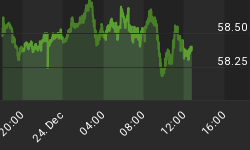When you establish the equities allocation within your portfolio, your macro-level decision may begin with an allocation between US stocks, non-US developed market stocks, and emerging market stocks (and a for some investors, frontier market stocks).
Canada:
Unless you invest in a global fund, you are likely to lack Canadian stocks in your allocation if you use broad index funds. That is because Canada is not part of the popular MSCI EAFE (Europe, Australasia and Far East) index that is tracked by ETFs from Barclays (EFA) and Vanguard (VEA). If you use those funds, you would need to add a separate Canadian fund, such as EWC, to round out the developed markets category.
As a practical matter, it may be useful to divide your equity planning around four categories: US stocks, Canadian stocks, stocks of other developed markets and emerging market stocks (and possibly frontier market stocks).
Frontier Markets:
Frontier markets are so small that they barely register on the market-cap scale, and would have only a nominal representation in a world free-float weighted equities portfolio.
How Much Weight for Each Category?
The final weight for each category is, of course, an entirely individual matter based on your facts and circumstances, as well as your market interpretation and expectations. Notwithstanding that general admonition, we believe you should start your planning process with a world free-float market-cap allocation, and then deviate from that based on a reasoned evaluation of your situation and market views.
Put another way, a world market-cap allocated equities portfolio is one without any particular convictions about the market. Any deviation from a world market-cap allocation within the equity portion of your portfolio is either an intended or unintended overweight or underweight of regions or countries.
Regardless of your country of domicile or your currency base, beginning with a world allocation is world neutral. Based on your situation and how you expect markets to perform, you can then make reasoned deviations. That we feel is a logical approach.
The Alternative:
The alternative approach is to begin with a 100% allocation to your home country equities, then deviate from that toward some level of non-domestic equities.
Most retail-level literature in the US for US investors comes from that perspective. We feel that is a less effective approach. It sets up psychological barriers to a fully open consideration of the possibilities for diversification, and to the risks and consequences of potentially too much domestic exposure.
Ever Changing World Allocations:
World market-cap allocations are not static. They change constantly. You should make an effort periodically to find out what the latest world allocation is. Our recent article about shrinking US work market-cap illustrates the changing nature of world allocations.
Current Allocation Ratios:
This table shows what portion of your overall portfolio would be allocated to each of US stocks (proxy VTI), Canadian stocks (proxy EWC), other developed market stocks (proxy EFA) and emerging market stocks (proxy VWO), at various levels of overall equity allocation within your portfolio in 10% increments from 50% to 100%.

These allocations would apply whether you invest in mutual funds, ETFs or individual stocks.
Japan:
For those of you who wish to deal with Japan (proxy EWJ) as a separate category, it represents 9% of world free-float market-cap. The remainder of non-Canadian, non-Japanese developed markets is therefore about 35.6% of world free-float market-cap.
Note:
The chart shows you the appropriate allocations BEFORE you make specific reasoned deviations based on your situation and your market views.
















